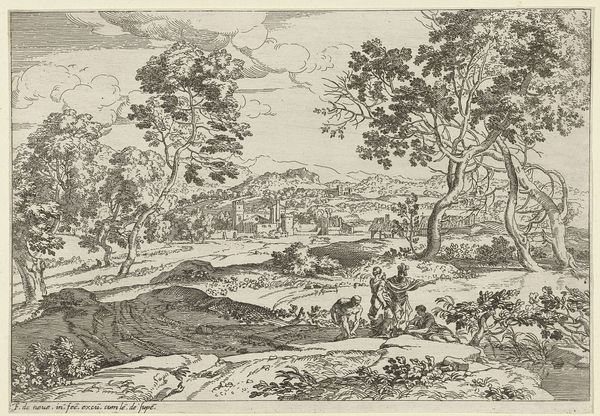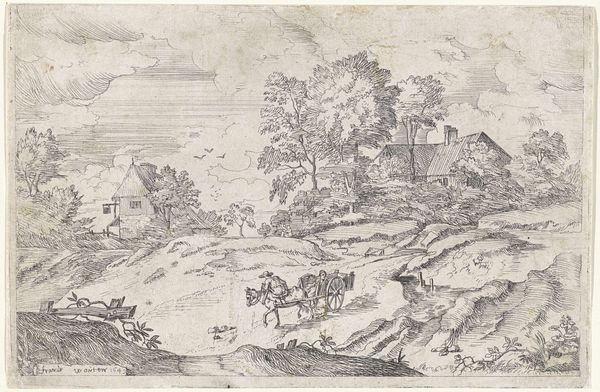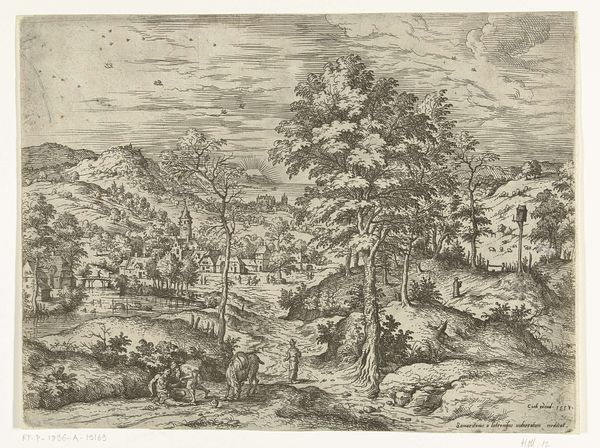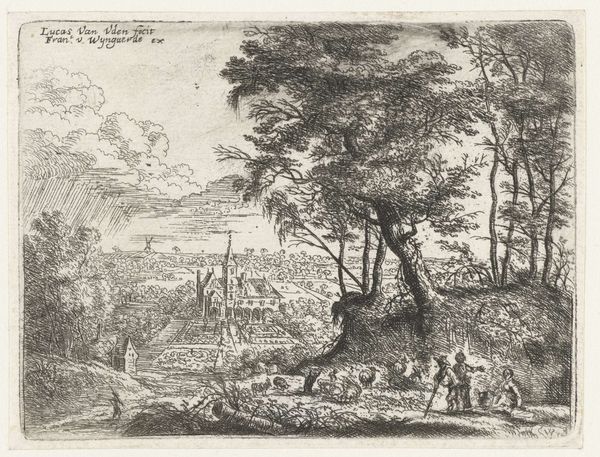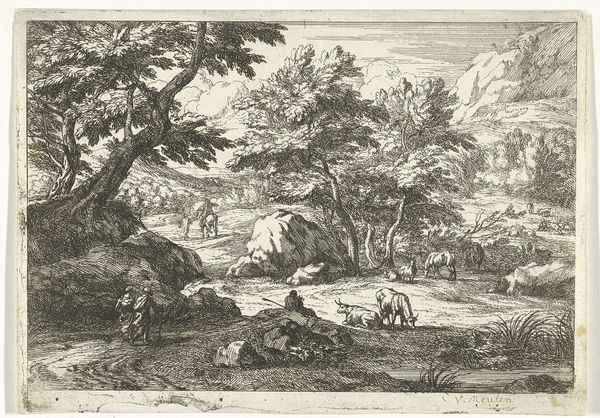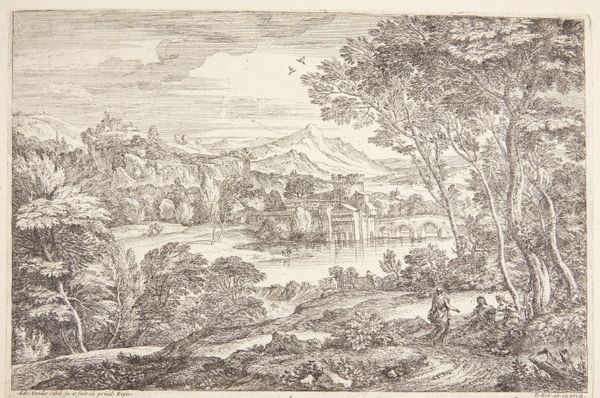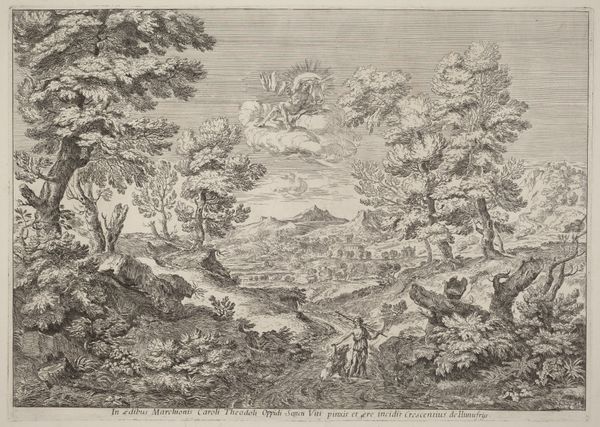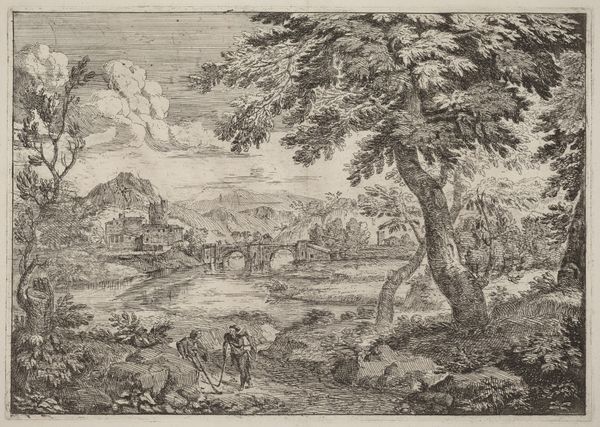
drawing, paper, ink
#
drawing
#
baroque
#
pen drawing
#
landscape
#
classical-realism
#
figuration
#
paper
#
ink
Dimensions: height 121 mm, width 202 mm
Copyright: Rijks Museum: Open Domain
Giovanni Francesco Grimaldi made this landscape print sometime in the 17th century, using etching. An etching is made by drawing into a wax ground on a metal plate, then bathing the plate in acid; this bites away the exposed lines, which are then inked and printed. Look closely, and you’ll see the characteristic qualities of this process: a certain softness of line, and the capacity for great detail. The entire composition is built up from these delicate marks, creating a rich visual texture. This wasn’t a quick process. It required skill not only in drawing but in preparing the plate, timing the acid bath, and operating the printing press. All these labors add up, contributing to the image’s value. Prints like this played a key role in the art market of the time, making images available to a wider audience. They were both art objects in their own right, and a means of circulating designs. By considering the labor and the circulation of images in this period, we can fully appreciate the historical and social context in which it was made.
Comments
No comments
Be the first to comment and join the conversation on the ultimate creative platform.
